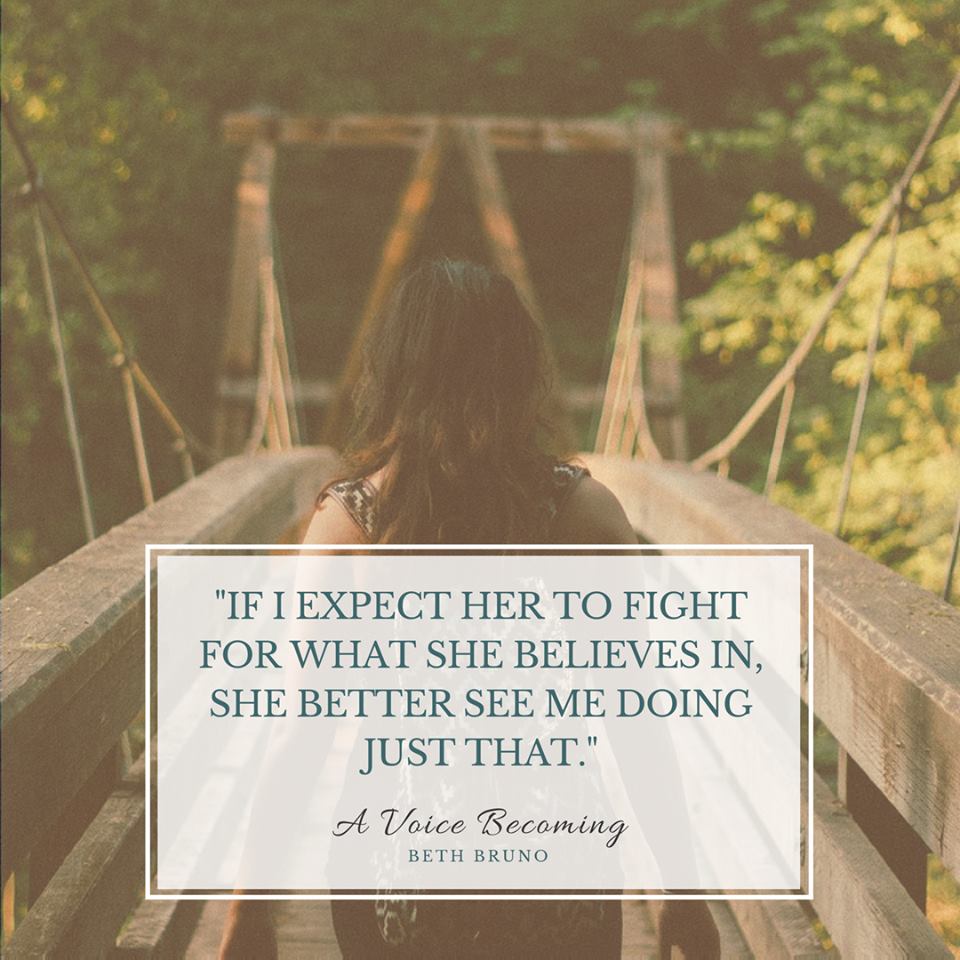I met Michelle Ferrigno Warren in a crowded empanada restaurant on a hot summer day in downtown Denver. We crossed the street to a pizza joint for a bit more quiet and privacy and Michelle let me ask about her work on immigration reform in Denver and the U.S., her experience writing The Power of Proximity, and her plans for the future.
Michelle and her husband, David, have lived in Denver for over 20 years and are the founders of Open Door Ministries, a ministry serving homeless and low income populations. They raised their three children in an immigrant neighborhood in inner city Denver and Michelle said they have no regrets about this. In fact, she wishes everyone could live the life she has lived. I once heard her share on a podcast about the nuanced lives her children have experienced because of where they live. They grew up speaking Spanish and have a desire to travel and learn about other cultures.
Michelle is the advocacy and policy engagement director for the Christian Community Development Association, an organization that empowers and equips leaders to serve in urban centers around the world. Dr. John Perkins began the CCDA with the vision of the “3 R’s”—relocation, reconciliation, redistribution, which has expanded now to 8 principles. Michelle works towards justice in the public sphere because she believes that “just because something is a law does not mean it serves the cause of justice. We need to enable the courts of law to rule in a manner that brings about justice for all the people” (118-119). She believes that as followers of Jesus, we are called to more than engaging in ministry from a distance.
We talked about what her children are doing now, and she shared about a couple “Michelle-isms” she tells her kids over and over again. “I remind my kids that they are the Light of the World and to not be afraid. When you see darkness run toward it with the Light.”
She hopes her children bring light to every dark corner of the world. The other thing she always reminds them when they discuss their plans for the future is “Don’t forget the poor. Don’t forget the poor. Don’t forget the poor.”Michelle said she wrote her book, The Power of Proximity, with Millennials in mind because they are so hungry to impact the world. In her book she writes that “learning of the pain of others can compel us to become proximate, which should move us to engage more deeply. The more we know as a result of our chosen proximity, the more we have the opportunity to put our words—our ‘talk’—into action … This shouldn’t be a big stretch for Christians who follow Jesus” (71). She hopes Millennials will choose to live proximate to the issues and people they talk about helping. She also writes that “privileged people will listen to privileged people. You have a voice,” and goes on to talk about Paul using his privilege as a Roman citizen and Pharisee to spread the gospel (120).
Michelle struggled with whether or not she should write this book because she was worried it might not be her story to tell. She feared hijacking the stories of immigrant neighbors and friends she’s lived among over the years. But her good friend, Daniel Hill, the author of White Awake, called her out and said something along the lines of “the most deceptive lies are the ones painted in nobility.”
Before writing the book, she asked a group of friends to gather and do something called a “clearing committee” or “clearness committee,” a Quaker spiritual practice of worship, sharing, and prayer, to help her discern her next step. Through this experience, she realized she was using fear and the fact that she is a white woman as an excuse not to do what she knew deep down God was calling her to do.
Michelle wrote her first draft of The Power of Proximity in just three months. She reserved every Friday to write, but also spent many evenings from 10 pm to midnight completing revisions and editing. She admitted most of the book came from the previous twenty years of teaching, talks and speeches that were so familiar to her that she simply needed to record them all in one place.
Her book had a profound impact on my life personally in that it influenced the neighborhood where we bought a house last summer. Though we are in a decent neighborhood of houses built in the 1970’s, we purposely chose to live here because of the more diversified racial and socioeconomic groups that live all around us compared to other places in our city. Her words moved me as she wrote “we should be willing to leave our communities of comfort to choose a proximate place and humbly and sacrificially follow Christ’s example of love” (71).
I handed her the copy of her book I brought with me so she could thumb through and see the notes and tons of underlines throughout the pages. As a soon-to-be author, I imagined it might feel good to see how your words impact others. She smiled as she looked through, laughing and saying “Oh, that’s good!” She flipped to the chapter on race because she said that was one of her favorites, then opened the cover and signed the book, “What a joy it is to connect with you on your journey! Keep the Faith, Michelle.”
As we finished up our time together, I asked Michelle where she sees herself in ten years. With a gleam in her eye, she said, “Probably in the Senate.” I congratulated myself on my inner prophet because on the way to meet Michelle, I had told my husband, “I feel like I’m going to meet up with a Senator or something.” I told her it was a sign that she should definitely do it.
I don’t think I’ve ever met such a powerful, confident, or connected woman in person and yet I was intrigued by her quirks (all she ate was three sausage links and marinara sauce mixed with parmesan cheese) and softness (she wore a ruffled floral shirt, denim shorts, and sandals). The fact that Michelle was willing to meet with me even though I have a relatively small platform and no political pull or influence was a testament to her humility (or at least to her Christian sense of duty to serve the lowly bloggers, writers and wannabe do-gooders of the world). Our meeting was one of the highlights of my summer.
The Power of Proximity is a buy-and-keep-on-your-shelf sort of book rather than a borrow-from-the-library-or-from-a-friend type of book. You will want to scribble stars, notes and excessive underlines throughout every page. Beware, though, her words may propel you to flee comfort, security, and safety in order to live out your life of love from a place of proximity.
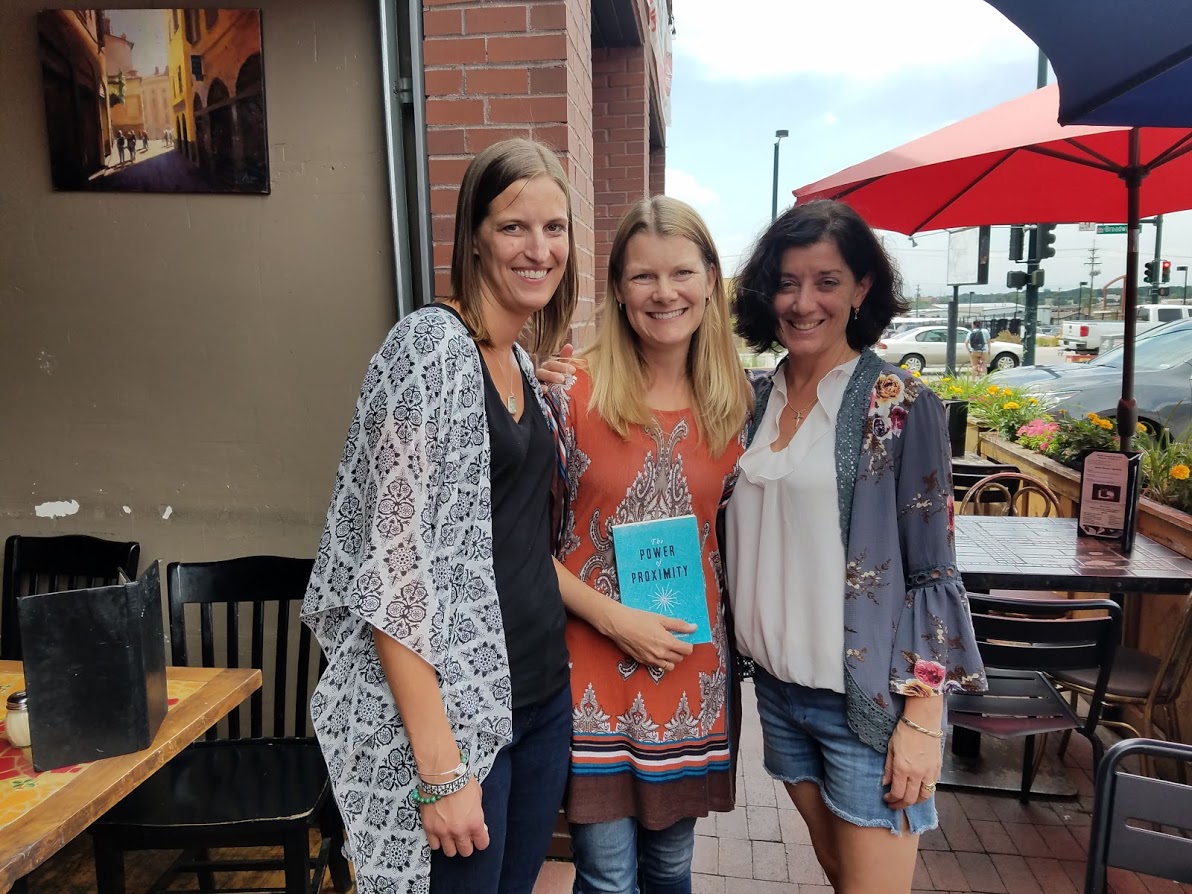
More about Michelle (from Amazon):
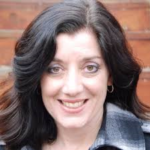 Michelle Ferrigno Warren is the advocacy and policy engagement director for the Christian Community Development Association. She is an immigration, education, and human service policy specialist and is an adjunct faculty member at Denver Seminary. With over twenty years experience working in Christian community development, Michelle is a part of the national Evangelical Immigration Table and helps consult for the National Immigration Forum. She is a founding staff member of Open Door Ministries, a large community development corporation. Michelle, her husband, David, and their three children live in an immigrant neighborhood in Denver, Colorado.
Michelle Ferrigno Warren is the advocacy and policy engagement director for the Christian Community Development Association. She is an immigration, education, and human service policy specialist and is an adjunct faculty member at Denver Seminary. With over twenty years experience working in Christian community development, Michelle is a part of the national Evangelical Immigration Table and helps consult for the National Immigration Forum. She is a founding staff member of Open Door Ministries, a large community development corporation. Michelle, her husband, David, and their three children live in an immigrant neighborhood in Denver, Colorado.
Follow Michelle on Twitter at @mcfwarren.
You can hear Michelle interviewed on these podcasts:
Brew Theology: Part 1 and Part 2
***
BOOK GIVEAWAY
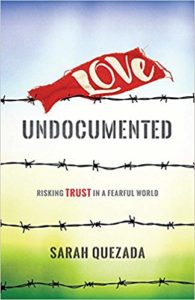 We’re giving away a FREE copy of Sarah Quezada’s book, Love Undocumented! To enter, visit either my Instagram post or Facebook post and tag up to four friends you think might be interested in her book. I’ll enter you once per friend that you tag. Giveaway will end Wednesday, August 29th, at midnight (MT). No bots and only U.S. residents, please!
We’re giving away a FREE copy of Sarah Quezada’s book, Love Undocumented! To enter, visit either my Instagram post or Facebook post and tag up to four friends you think might be interested in her book. I’ll enter you once per friend that you tag. Giveaway will end Wednesday, August 29th, at midnight (MT). No bots and only U.S. residents, please!
***
 The theme for August is “Homelessness, Refugees & the Stranger.” Follow along on social media (links in upper right) to keep up with the latest posts or sign up for the newsletter below for links to the most recent blog posts, thought-provoking articles from the web, and a few of the things I’m into these days.
The theme for August is “Homelessness, Refugees & the Stranger.” Follow along on social media (links in upper right) to keep up with the latest posts or sign up for the newsletter below for links to the most recent blog posts, thought-provoking articles from the web, and a few of the things I’m into these days.
Sign up for the (occasional) Mid-month Digest and the (loosely) “end of the month” Secret Newsletter for Scraping Raisins Here:
*This post contains Amazon affiliate links



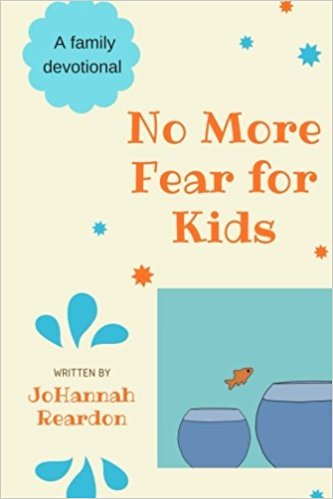
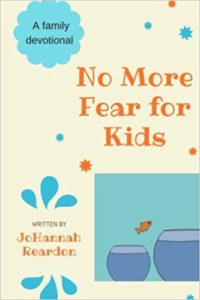
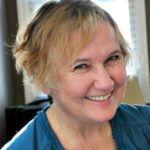 More About JoHannah:
More About JoHannah: Our theme for April is “Books and Writing,” and I hope to share my favorite books, podcasts and resources for new writers.
Our theme for April is “Books and Writing,” and I hope to share my favorite books, podcasts and resources for new writers. 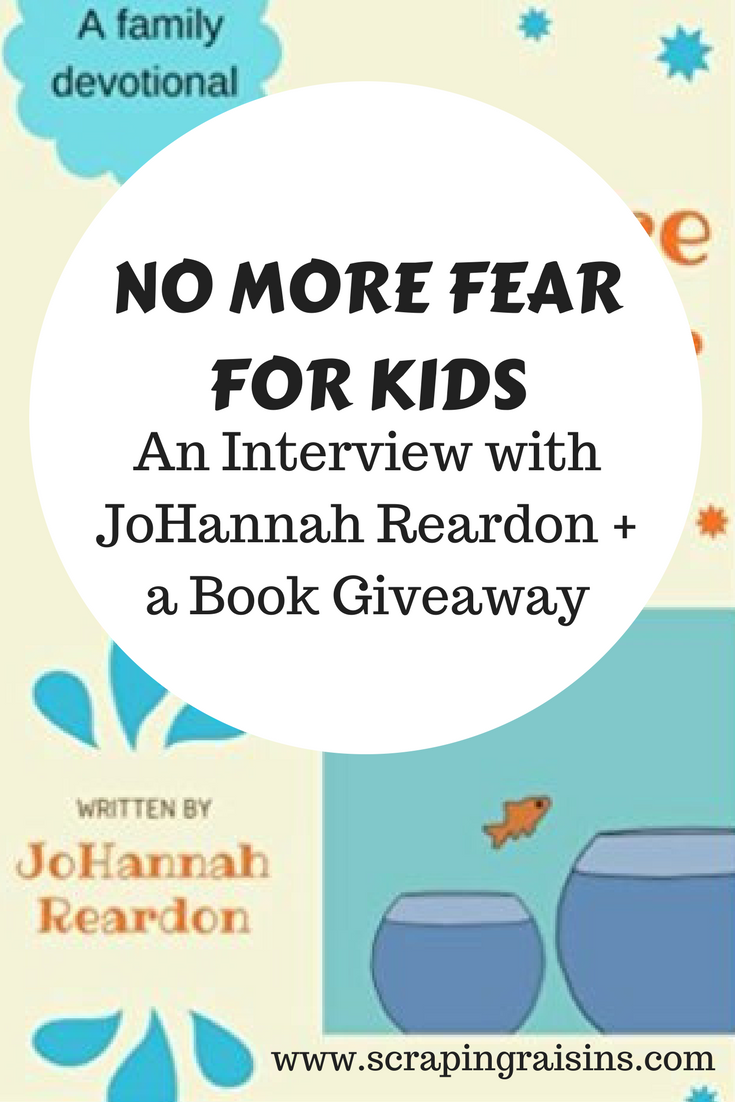


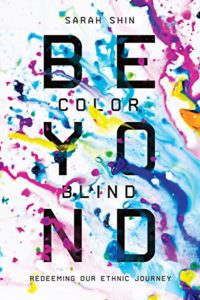 Sign up for my newsletter by February 28th and be entered to win a copy of
Sign up for my newsletter by February 28th and be entered to win a copy of  This month we’ll be discussing racism, privilege and bridge building. If you’d like to guest post on this topic, please email me at scrapingraisins(dot)gmail(dot)com. Yes, this is awkward and fraught with the potential for missteps, blunders and embarrassing moments, but it’s necessary. Join me?
This month we’ll be discussing racism, privilege and bridge building. If you’d like to guest post on this topic, please email me at scrapingraisins(dot)gmail(dot)com. Yes, this is awkward and fraught with the potential for missteps, blunders and embarrassing moments, but it’s necessary. Join me? 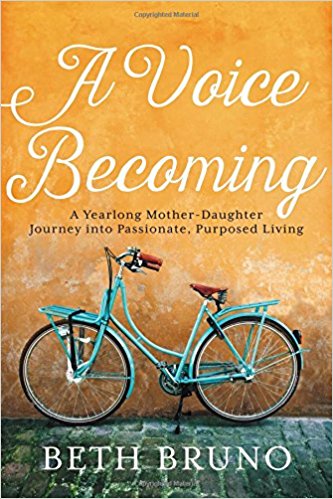
 is week, I’m giving away two free hardback copies of A Voice Becoming.
is week, I’m giving away two free hardback copies of A Voice Becoming. BETH BRUNO traded the Blue Ridge for the Rocky Mountains after two decades in mega cities. Upon graduating from Northwestern University in Chicago, she and her husband moved to an even larger city, Istanbul, where they led campus teams with Cru. Ten years later they moved to Seattle where Beth received an MA in International Community Development and launched a nonprofit aimed at preventing domestic minor sex trafficking. Beth regularly speaks and trains around the topic of trafficked youth, including interviews with local radio stations and lots of coffee with the FBI, Homeland Security, and local law enforcement.
BETH BRUNO traded the Blue Ridge for the Rocky Mountains after two decades in mega cities. Upon graduating from Northwestern University in Chicago, she and her husband moved to an even larger city, Istanbul, where they led campus teams with Cru. Ten years later they moved to Seattle where Beth received an MA in International Community Development and launched a nonprofit aimed at preventing domestic minor sex trafficking. Beth regularly speaks and trains around the topic of trafficked youth, including interviews with local radio stations and lots of coffee with the FBI, Homeland Security, and local law enforcement.